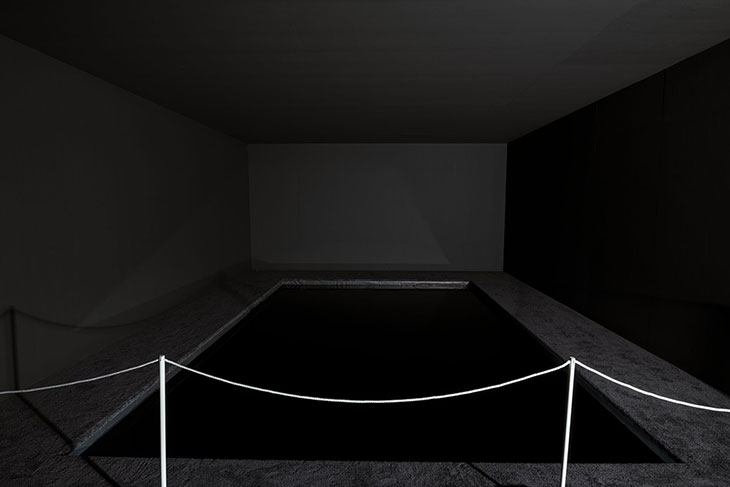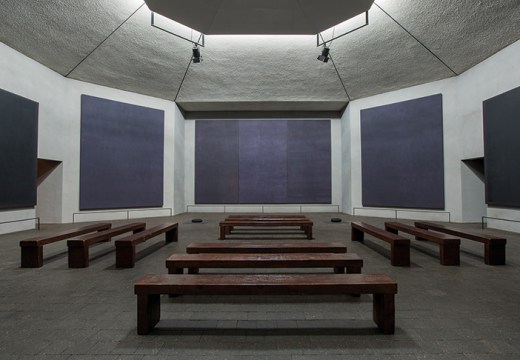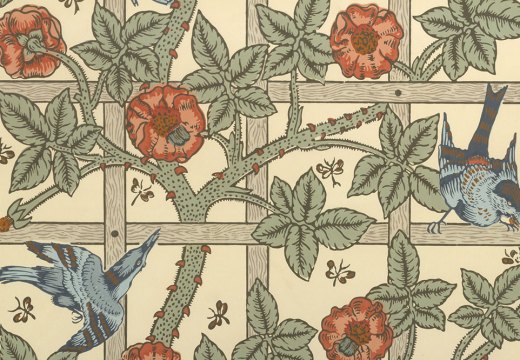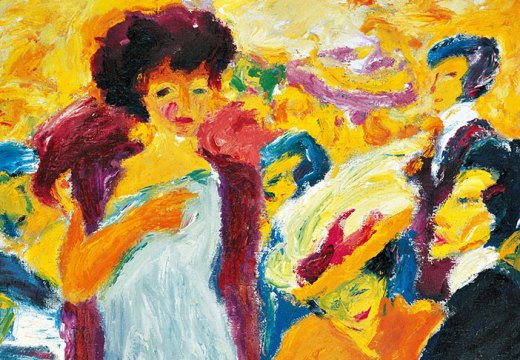‘Paint it Black’ is presented as a 14-work exploration of the painterly use of black, but is really a one-man show introduced by a line-up of stellar opening acts. The focal point is Black Water (Zwart Water), an installation from 1964 by the Dutch artist Armando (1929–2018), sold to the Kröller Müller Museum as a few pages of sparse instructions by the artist himself in 2015. The work consists of a black six-by-four-metre pool of water enclosed in a black-walled room. The entire exhibition, featuring work by a roster of international artists from the museum’s permanent collection, was designed and completed without anyone from the museum’s staff having previously seen the finished installation itself.
Armando is a household name in the Netherlands. He described himself as ‘many-sided in his one-sidedness’: he was a painter, a sculptor, a writer, poet and journalist; a historian, an actor, a boxer, a violinist and, after his museum in Amersfoort burst into flames in the final years of his life, a ceramicist. He grew up living next to the Amersfoort concentration camp: underpinning the entirety of his career was the spectre of the Second World War and, in his words, ‘the tragedy of man’. He sparked controversy with the publication in 1967 of a collection of interviews with SS veterans; in 1979 he moved to Berlin, where for a decade he worked in the former studio of Arno Breker, the preferred sculptor of the Third Reich, and published further books exploring the memories of those who lived through and fought on the wrong side of the war. In one interview, he said: ‘I have hated the war so much that I came to identify with it. I have become the war.’ He often alluded to what he saw as the beauty of evil.

Black Water (1964), Armando. Kröller-Müller Museum, Otterlo. Photo: Marjon Gemmeke
For most of his artistic career Armando was a solitary figure, but from 1960–65 he was a member of the Dutch Zero movement, whose aim, as he once put it, was ‘not to stifle reality with moralism or interpretation (to art-ify it) but to intensify it’. Black Water belongs to this period of his career. His direct inspiration for the work was seeing the dark, ‘almost black’ water of an Amsterdam canal at night. Because of the group’s eschewal of interpretation, it is tempting to take the artwork at face value – and this is what the exhibition does, drawing a line from Armando to contemporaneous figures including Ad Reinhardt, Jo Baer, Richard Serra and Louise Nevelson, based on the use of black in their artworks.
Though Armando never explained his fascination with the colour black himself (‘I only know that I must’, he once said when asked why he deployed it so often), some of the other artists displayed expounded on their use of black at length. The exhibition begins with Reinhardt’s Ultimate Painting No. 39 (1960). As Reinhardt aged, black came to represent all that was absent in the West. He wanted its role as a negative to be superseded by its metaphysical status in the East, citing sources as varied as Lao Tzu (‘the Tao is dim and dark’) and the German medieval theologian Eckhart (‘the divine dark’), and frequently alluding to the Kaaba in Mecca. The viewer was to contemplate his black paintings as a faithful devotee.

Ultimate Painting No. 39 (1960), Ad Reinhardt. Kröller-Müller Museum, Otterlo. Photo: Cary Markerink
Baer’s Untitled (White Star) and Untitled (Black Star) (1960–61), meanwhile, are two large canvases which call to mind flags of newly declared people’s republics. The colours in the titles of the work refer not to the stars but to the painted canvas that surrounds them: for Baer, the stars have no representational meaning; they are simply compositional elements, part of the artist’s cool investigation of the surfaces and edges of the canvas. Like Richard Serra’s palatially sized Abstract Slavery (1974), displayed on the adjacent wall, Baer’s works use black as a formalist tool, devoid of symbolism or atmospheric effects.
Then there’s Louise Nevelson’s Sky Cathedral III (1959), which presents black as escapism. The sculpture is a stacked tower of dispossessed wooden items amassed from the streets of New York City and embalmed in black paint. Nevelson, who frequently spoke of her unease with the ‘three-dimensional world’, was interested in finding ways to transcend the worldly, the material. ‘If I loved wood so much I wouldn’t paint it black,’ she said. She ennobled it with black, a colour she deemed ‘the most aristocratic colour of all’.

Sky Cathedral III (1959), Louise Nevelson. Kröller-Müller Museum, Otterlo. Photo: Cary Markerink
Enter Black Water. The room is dark and the carpet is soft: you sink into it and glide through it. The water is cordoned off by a rope barrier and faintly lit by a strip of LED lighting, which gives the seemingly opaque surface a purplish hue. The work requires no effort from the viewer. Like the concept itself, the effect is simple and visceral. It is oppressive and consuming.
Although Armando created the installation during his period of association with the Zero group, he viewed his entire life’s work as a Gesamtkunstwerk, without exception. His paintings and drawings endlessly return to the woods surrounding the concentration camp at Amersfoort through black, tar-like conjurings of ‘guilty’ landscapes, soldiers, watchtowers, barbed wire, and trees. Yet debates on whether Armando implicated himself in his work as among the guilty are unresolved. Armando left no instructions as to whether the water in Black Water should be reflective. Peering down from a distance, its surface seems impenetrable. But if you crouch down on all fours beneath the barrier and reach out, offering your hand, a perfect mirror image emerges. And you find yourself surrounded by an inescapable darkness with nothing to look at but another version of yourself, reaching out from the void.
‘Paint it Black’ is at the Kröller-Müller Museum, Otterlo, until 28 February 2021.
Unlimited access from just $16 every 3 months
Subscribe to get unlimited and exclusive access to the top art stories, interviews and exhibition reviews.














![Masterpiece [Re]discovery 2022. Photo: Ben Fisher Photography, courtesy of Masterpiece London](http://www.apollo-magazine.com/wp-content/uploads/2022/07/MPL2022_4263.jpg)
Why are fathers so absent from art history?